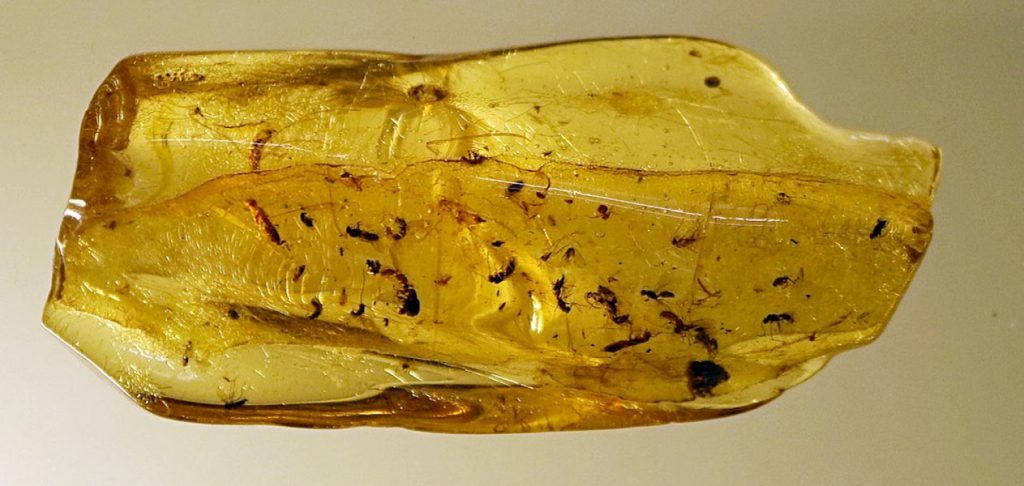How can you forget the timeless 1993 classic film “Jurassic Park”? Spoiler alert! In the movie, paleontologist Alan Grant recreates dinosaurs from DNA found in the blood of a mosquito preserved in amber. While that may seem like fiction, animal fossils have been found in amber since the time of the ancient Greeks. Even though cloning hasn’t been performed from amber fossils, they provide a window into the past and the history of life on Earth.
Recently, a team of scientists have discovered a unique insect fossil from an amber sample. In the Hukawng Valley of Myanmar, just south of India, a huge sample was extracted from the mines there. The amber from this valley is specifically called burmite, and is world-renowned for preserving all sorts of life. The researcher dissected and used microscopes to make images of the massive burmite sample and discovered two new species of cockroaches. The two new species identified were Crenocticola svadba and Mulleriblattina bowagi (Gesundheit! Am I right?).
Here is a younger cockroach, “only” 40-50 million years old and about 4.5 mm long. Source: Anders L. Damgaard / CC BY-SA
Besides their fun and wacky names, these cockroaches are exceptional because they are the oldest cave dwelling animal ever recorded. The scientist predicted the age of the cockroaches to be at least 99 million years old. Their age was determined using a mineral called zircon that is formed in volcanic fragments from the cave. Zircon is found combined with uranium, lead, and other heavy elements. The elements found within the zircon exist in different isotope states which were measured to reliably determine the age of the rocks.
These two cockroaches are part of a unique population of organisms called troglobites. Troglobites are animals that are native and thrive in underground habitats like caves. These animals are adapted to these environments through gradual gaining and losing of traits to survive in dark caves with little nutrition. These cave-dwelling creatures are known to have smaller eyes and wings, lack pigment, and increased length and size of sensory organs and antennae. The two new species discovered possessed some or all of these traits and also seemed to have smaller leg spines. These cockroaches face less predators in caves and therefore have decreased defense mechanisms like leg spines. Since there are such limited resources in caves, these cockroaches may have fed off dinosaur droppings or guano.
Prior to the discovery of C. syadba and M. bowagi, the oldest known cave-adapted animals lived 66 million years ago during the Cretaceous period. That makes these cockroaches now the oldest known troglobites. The end of the Cretaceous period marks the extinction of the dinosaurs and much of life on earth. The newly discovered C. syadba and M. bowagi are part of Nocticolidae family of cave cockroaches, which lived at least 120 million years ago and are still present today. This suggests that these cave dwellers could have been some of the few animals to survive the mass extinction 66 million years ago that infamously killed three quarters of plant and animal life on Earth (including the T. rex and other land-dwelling dinosaurs.)
Caves experience flooding and rock collapses, resulting in the destruction of habitats and fossil records. The unstable nature of caves over the long term leaves these scientists uncertain they will find a more recent fossil of these species. This may be why no fossil evidence has been found of these species prior to the mass extinction event, suggesting that these bugs roamed before, during, and after the T. rex. Nonetheless, cockroaches have always been considered “indestructible” and it seems that at least the Nocticolidae family has persisted through the ages.Questions still remain if C. syadba and M. bowagi are still alive today and if there is any evidence of older animal cave fossils. Paleontologists are certain that organisms inhabited caves prior to these cockroaches, but only time will tell until new fossil evidence is discovered. One thing is for certain though, to paraphrase Dr. Ian Malcom (Jeff Goldblum) from Jurassic Park, “life… finds a way.”


